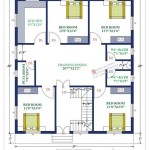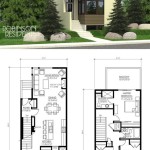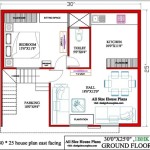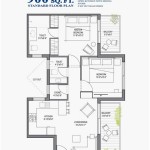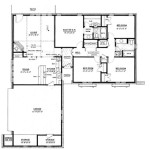Building plans for my house are detailed documents that outline the design, structure, and construction of a residential building. They provide a comprehensive guide for contractors and homeowners alike, ensuring that the project is completed safely, efficiently, and in accordance with building codes and regulations.
Creating building plans involves a collaborative process between architects, engineers, and homeowners. The plans typically include floor plans, elevations, sections, and detailed drawings of each component of the house, from the foundation to the roof. They specify the materials to be used, the dimensions of the rooms, and the placement of electrical, plumbing, and HVAC systems.
In the following sections, we will delve into the essential components of building plans, explore the benefits of having them, and provide valuable tips for homeowners who are planning to build their own homes.
Building plans for your house are essential for ensuring a safe, efficient, and code-compliant construction project. Here are nine important points to consider:
- Detailed floor plans: Outline the layout of each level of your house.
- Elevations: Show the exterior appearance of your house from different sides.
- Sections: Provide cross-sectional views of your house, illustrating the relationship between different spaces.
- Foundation plan: Specifies the type and dimensions of your house’s foundation.
- Roof plan: Indicates the type, pitch, and materials of your house’s roof.
- Electrical plan: Shows the location of electrical outlets, switches, and fixtures.
- Plumbing plan: Indicates the location of plumbing fixtures, pipes, and drains.
- HVAC plan: Outlines the design and location of your house’s heating, ventilation, and air conditioning systems.
- Site plan: Shows the placement of your house on your property, including driveways, patios, and landscaping.
Having complete and accurate building plans is crucial for obtaining building permits, coordinating with contractors, and ensuring that your house is built to your specifications.
Detailed floor plans: Outline the layout of each level of your house.
Detailed floor plans are essential components of building plans for your house. They provide a precise and comprehensive overview of the layout of each level of your house, including the placement of rooms, walls, doors, windows, and other structural elements.
Floor plans are typically drawn to scale, allowing you to visualize the size and proportions of each room and space. They also indicate the dimensions of the rooms, the location of doors and windows, and the flow of traffic between different areas of the house.
Creating detailed floor plans requires careful planning and consideration of your needs and preferences. You should think about how you want to use each space, how the rooms will connect to each other, and how natural light will enter the house.
Floor plans are not just useful for visualizing the layout of your house; they are also essential for obtaining building permits and coordinating with contractors. They provide a clear and concise guide for the construction process, ensuring that your house is built to your specifications.
Elevations: Show the exterior appearance of your house from different sides.
Elevations are another important component of building plans for your house. They show the exterior appearance of your house from different sides, typically the front, back, and sides. Elevations are drawn to scale and include details such as the height and width of the house, the placement of windows and doors, the type of siding and roofing materials, and any other architectural features.
Elevations are important for visualizing the overallof your house and ensuring that it is consistent with your design intent. They are also essential for obtaining building permits and coordinating with contractors. By providing a clear and concise representation of the exterior of your house, elevations help to ensure that your house is built to your specifications.
In addition to the front, back, and side elevations, you may also need to create elevations for specific sections of your house, such as the garage or a dormer. These additional elevations provide a more detailed view of the exterior appearance of your house and can be helpful for contractors when they are constructing specific sections of the house.
Overall, elevations are an essential component of building plans for your house. They provide a comprehensive and accurate representation of the exterior appearance of your house, which is important for obtaining building permits, coordinating with contractors, and ensuring that your house is built to your specifications.
Sections: Provide cross-sectional views of your house, illustrating the relationship between different spaces.
Sections are another important component of building plans for your house. They provide cross-sectional views of your house, illustrating the relationship between different spaces and how they connect vertically. Sections are typically drawn to scale and include details such as the height of each story, the location of windows and doors, the type of flooring and ceiling materials, and any other structural features.
Sections are important for visualizing the three-dimensional structure of your house and ensuring that all of the different spaces flow together seamlessly. They are also essential for obtaining building permits and coordinating with contractors. By providing a clear and concise representation of the interior of your house, sections help to ensure that your house is built to your specifications.
- Vertical sections: Show the relationship between different floors of your house, from the basement to the attic.
- Horizontal sections: Show the relationship between different rooms on the same floor, such as the living room, dining room, and kitchen.
- Detailed sections: Provide a more detailed view of specific areas of your house, such as the kitchen or bathrooms.
- Cross sections: Show how different parts of your house connect to each other, such as the garage to the main house or an addition to the original structure.
Overall, sections are an essential component of building plans for your house. They provide a comprehensive and accurate representation of the interior structure of your house, which is important for obtaining building permits, coordinating with contractors, and ensuring that your house is built to your specifications.
Foundation plan: Specifies the type and dimensions of your house’s foundation.
The foundation plan is an essential component of building plans for your house. It specifies the type and dimensions of your house’s foundation, which is the structural support system that transfers the weight of the house to the ground. The foundation plan also indicates the location of footings, which are concrete pads that distribute the weight of the house over a larger area of soil.
The type of foundation that is used for your house will depend on a number of factors, including the soil conditions at your building site, the size and weight of your house, and the local building code requirements. Common types of foundations include:
- Slab-on-grade foundations: These foundations are made of a single, continuous slab of concrete that is poured directly on the ground.
- Crawlspace foundations: These foundations have a concrete perimeter wall that supports the house, and a crawlspace beneath the house that provides access to plumbing, electrical, and HVAC systems.
- Basement foundations: These foundations have concrete walls that extend below the ground level, creating a basement that can be used for storage or living space.
The dimensions of your house’s foundation will be determined by the size and weight of your house, as well as the local building code requirements. The foundation should be large enough to support the weight of the house without settling or cracking, and it should be deep enough to prevent frost damage.
The foundation plan is an important part of building plans for your house. It provides the necessary information to ensure that your house has a strong and stable foundation.
Roof plan: Indicates the type, pitch, and materials of your house’s roof.
The roof plan is another important component of building plans for your house. It indicates the type, pitch, and materials of your house’s roof, which is the structural system that protects the house from the elements.
- Type of roof: There are many different types of roofs, including gable roofs, hip roofs, and flat roofs. The type of roof that you choose will depend on the architectural style of your house, the climate in your area, and your personal preferences.
- Pitch of roof: The pitch of a roof is the angle at which it slopes. The pitch is typically expressed in degrees or as a ratio, such as 6:12. A steeper pitch will shed water more effectively, but it will also require more materials and labor to build.
- Roofing materials: There are many different types of roofing materials available, including asphalt shingles, metal roofing, and tile roofing. The type of roofing material that you choose will depend on the climate in your area, the architectural style of your house, and your budget.
- Roofing details: The roof plan will also include details such as the location of vents, chimneys, and skylights. These details are important for ensuring that your house is properly ventilated and that it meets local building code requirements.
The roof plan is an important part of building plans for your house. It provides the necessary information to ensure that your house has a strong and durable roof that will protect it from the elements.
Electrical plan: Shows the location of electrical outlets, switches, and fixtures.
The electrical plan is an essential component of building plans for your house. It shows the location of all electrical outlets, switches, and fixtures in your house, as well as the wiring that connects them. The electrical plan is used by electricians to install the electrical system in your house.
The electrical plan is typically drawn to scale and includes a floor plan of your house with the location of all electrical outlets, switches, and fixtures marked. The plan also includes a legend that explains the symbols used to represent different types of electrical devices.
The electrical plan is important for ensuring that your house has a safe and functional electrical system. It helps to prevent electrical fires and other hazards by ensuring that all electrical devices are properly installed and connected.
In addition to the basic electrical plan, you may also need to create a lighting plan. The lighting plan shows the location of all light fixtures in your house, as well as the type of lighting that will be used in each room. The lighting plan helps to ensure that your house has adequate lighting for all of your needs.
The electrical plan is an important part of building plans for your house. It provides the necessary information to ensure that your house has a safe and functional electrical system. The electrical plan should be created by a qualified electrician who is familiar with the local building code requirements.
Plumbing plan: Indicates the location of plumbing fixtures, pipes, and drains.
The plumbing plan is another essential component of building plans for your house. It shows the location of all plumbing fixtures, pipes, and drains in your house, as well as the materials that will be used for each component of the plumbing system.
The plumbing plan is typically drawn to scale and includes a floor plan of your house with the location of all plumbing fixtures, pipes, and drains marked. The plan also includes a legend that explains the symbols used to represent different types of plumbing fixtures and pipes.
The plumbing plan is important for ensuring that your house has a safe and functional plumbing system. It helps to prevent leaks and other hazards by ensuring that all plumbing fixtures and pipes are properly installed and connected.
The plumbing plan should be created by a qualified plumber who is familiar with the local building code requirements. The plumber will also be able to help you select the right materials for your plumbing system and ensure that the system is installed properly.
HVAC plan: Outlines the design and location of your house’s heating, ventilation, and air conditioning systems.
The HVAC plan is another essential component of building plans for your house. It outlines the design and location of your house’s heating, ventilation, and air conditioning (HVAC) systems. The HVAC plan is used by HVAC contractors to install the HVAC system in your house.
The HVAC plan typically includes the following information:
- The type of HVAC system: There are many different types of HVAC systems available, including forced-air systems, heat pumps, and radiant heating systems. The type of HVAC system that you choose will depend on the climate in your area, the size of your house, and your budget.
- The location of the HVAC equipment: The HVAC equipment, such as the furnace, air conditioner, and heat pump, is typically located in a mechanical room or closet. The location of the HVAC equipment should be carefully chosen to ensure that it is accessible for maintenance and repair.
- The ductwork: The ductwork is the network of ducts that distribute heated or cooled air throughout your house. The ductwork should be carefully designed to ensure that all rooms in your house are heated or cooled evenly.
- The vents: The vents are the openings in the walls or ceilings that allow air to enter and exit the rooms in your house. The vents should be placed strategically to ensure that all areas of your house are heated or cooled evenly.
The HVAC plan is an important part of building plans for your house. It ensures that your house has a safe and efficient HVAC system that will keep you comfortable all year long.
The HVAC plan should be created by a qualified HVAC contractor who is familiar with the local building code requirements. The HVAC contractor will also be able to help you select the right HVAC system for your house and ensure that the system is installed properly.
Site plan: Shows the placement of your house on your property, including driveways, patios, and landscaping.
The site plan is another important component of building plans for your house. It shows the placement of your house on your property, as well as the location of driveways, patios, and landscaping.
- Placement of the house: The site plan shows the location of your house on your property, taking into account factors such as the size and shape of your lot, the slope of the land, and the location of any easements or setbacks.
- Driveways and walkways: The site plan shows the location of driveways and walkways, which provide access to your house from the street or other areas of your property.
- Patios and decks: The site plan shows the location of patios and decks, which provide outdoor living space and can be used for entertaining, relaxing, or simply enjoying the outdoors.
- Landscaping: The site plan shows the location of landscaping, such as trees, shrubs, and flowers, which can enhance the beauty and value of your property.
The site plan is an important part of building plans for your house because it helps to ensure that your house is properly sited on your property and that the outdoor space is designed to meet your needs and preferences.










Related Posts


